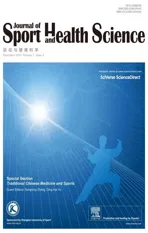The effects of Tai Chi exercise on cognitive function in older adults: A meta-analysis
2013-06-21YinWuYongtiWngElisbethBurgessJerryWu
Yin Wu,Yongti Wng,b,*,Elisbeth O.Burgess,Jerry Wu
aGerontology Institute,Georgia State University,Atlanta,GA 30303,USA
bDepartment of Physical Therapy,Georgia State University,Atlanta,GA 30303,USA
cDepartment of Kinesiology and Health,Georgia State University,Atlanta,GA 30303,USA
Review
The effects of Tai Chi exercise on cognitive function in older adults: A meta-analysis
Yin Wua,Yongtai Wanga,b,*,Elisabeth O.Burgessa,Jerry Wuc
aGerontology Institute,Georgia State University,Atlanta,GA 30303,USA
bDepartment of Physical Therapy,Georgia State University,Atlanta,GA 30303,USA
cDepartment of Kinesiology and Health,Georgia State University,Atlanta,GA 30303,USA
Background:Cognitive impairment is prevalent among older adults and results in degraded quality of life for older adults.As the population ages,this may cause a huge burden to society.Research has demonstrated that physical exercise is beneficial to cognitive function.The purpose of this meta-analysis was to critically assess the effect of Tai Chi exercise on global cognitive,executive,and memory functions in older adults.Methods:After a thorough electronic search and selection,eight studies were included in this meta-analysis with two cross-sectional and six intervention studies.Nine variables included in this meta-analysis were:mini mental status examination(MMSE),Alzheimer’s disease assessment scale-cognitive subscale(ADAS-cog),trailmaking test part A(TMA),trailmaking test part B(TMB),digit span test forward(DSF), digit span test backward(DSB),visual span test backward(VSB),verbal fluency test(VFT),and word delay recall test(WDR).The effect sizes and forest plots of these nine variables were generated.
Results:Four(MMSE,DSB,VSB,and VFT)out of nine variables were significantly improved after Tai Chi exercise with the effect sizes ranged from 0.20 to 0.46(small to medium).MMSE represented global cognitive function,and DSB,VSB,and VFT represented memory function. Conclusion:Tai Chi as a mind-body exercise has the positive effects on global cognitive and memory functions,and more consistent positive effects were found on memory function,especially verbal working memory.
Copyright©2013,Shanghai University of Sport.Production and hosting by Elsevier B.V.All rights reserved.
Cognitive impairment;Executive function;Global cognitive function;Intellectual experience;Memory function;Mind-body exercise
1.Introduction
Among the people aged 71 years or older,approximately 22%experienced cognitive impairment,no dementia(CIND)1and an additional 18%of these older adults(71 years or older) in the U.S.are suffering from Alzheimer disease(AD)or other forms of dementia.2Therefore,roughly 40%of older adults in America have some form of cognitive impairment.However, the onset of cognitive impairment and/or dementia may start at age early 50s.3As the absolute number of older adults increases,the high prevalence of cognitive impairment could bring an enormous economic burden to society.For example, aggregate payments for health care,long-term care and hospice for people with dementias are projected to increase from $200 billion in 2012 to$1.1 trillion in 2050,and the Medicare and Medicaid cover about 70%of the costs of care.4Finding ways to manage cognitive impairment is rather important for society.Physical exercise may be an important tool for managing cognitive health.As a result,many organizationsrecommend physical exercise as an approach to prevent CIND, AD,or other forms of dementia.5
How to manage cognitive impairment is of interest to many scientists.From a life-span perspective,researchers consider the development of cognitive functions as a process of lifelong adaption and they investigate approaches which may be effective throughout one’s lifetime.6Intellectual experience and physical exercise were two approaches that influence cognitive functioning.7Mind-body(MB)exercise is combination of physical exercise and intellectual experience.MB exercise,a subcategory of physical exercise,has been used for a long time in the East and now is gaining popularity and interest in the West.8Compared to other exercise forms,the unique characteristics of MB exercise consist of four identifiable elements:a focus on mind,movement,breathing,and a deeply relaxed state.9Chan and associates8stated that MB exercises emphasize the conscious control of each body movement,through slow movements where increased attention is paid to each movement.Moreover,a peaceful and relaxed state of mind is required during the practice of MB exercise.Because of these properties,MB exercise may be considered a combination of physical exercise and intellectual experience,which in turn,may have greater cognitive benefits than other forms of exercise,such as walking and jogging.
In America,Tai Chi,also known as Tai Chi Chuan originated from ancient China,is a well accepted MB exercise.Tai Chi is the combination of ancient Chinese philosophy and martial art.The philosophy of Yin and Yang,two opposing and independent forces is applied into the design of Tai Chi movements.10Practicing Tai Chi is actually activating the interaction of Yin and Yang energy within human body,and increasing the energy of human body and function of daily activities.11Tai Chi has been described as an exercise,a dance, a method of achieving mental peace and relaxation,and a philosophy of life.12As an MB exercise,Tai Chi implements cognitive tools of both visualization and focused internal awareness.Therefore,Tai Chi can train attention in a dual-task fashion with the eyes focusing on leading arm and the mind focusing on the breathing and movement sequence.13Tai Chi exercise increases self-awareness and at the same time relaxes the mind and body.The findings of a Tai Chi study by Lam and associates14showed that a simplified form of Tai Chi developed specifically for the elderly improved cognitive functions as well as coordinated cognitive integration of attention,voluntary motor actions,and postural control.Verbal and visual imagery required during Tai Chi practice may provide additional cognitive stimulation.Kasai and associate15examined the effect of a 6-month Tai Chi intervention on cognition of elderly women with mild cognitive impairment (MCI)and found a significant improvement in memory performance.
However,most Tai Chi studies on cognitive functioning are of small sample size,and the effects of the Tai Chi exercise on cognitive function has not been well summarized in a systematical format.Therefore,the purpose of this meta-analysis was to critically assess the effects of Tai Chi exercise on cognitive function in terms of global cognitive,executive,and memory functions in older adults.It was hypothesized that as an MB exercise,Tai Chi would have positive effects on cognitive function in older adults.
2.Methods
2.1.Search strategy
Studies that investigated the possible cognitive benefits of Tai Chi exercise were identified through a computerized search of all electronic databases:AgeLine,CINAHL,Medline,PsycINFO,PubMed,SPORTDiscus,and Web of Science. Articles published from January 1st,1992 to July 1st,2012 were included in this study.Relevant keywords relating to cognitive function(“cognitive”or“cognition”or“cognitive function”)were used in combination with words relating to MB exercise(“mind-body”or“Tai Chi”)and words relating to study subjects(“older adults”or“elderly”).
Eligiblestudieswereincludediftheymetallofthefollowing criteria:(1)study had original data;(2)the effect of Tai Chi exercise over cognitive function was the primary or secondary outcome;(3)research subjects were older adults(55 years and older);(4)cleardefinitionsofdomainsofcognitivefunctionand methodsusedtoassesscognitiveperformancewerereported;(5) article was written in English or translated into English;(6) participants in control group had no exercise or low intensity exercise such as stretching and muscle toning,and(7)all data required for meta-analysis were from intervention studies with experiment and control groups,intervention studies with one group,and cross-sectional studies.The required data for intervention studies with experiment and control groups included sample size of experiment and control groups,mean score and standard deviation of pre-and post-test of experiment and control groups.In the case of data where pre-and post-test scores were not reported,mean score and standard deviation of change between two tests of experiment group and control group were required.For intervention studies with one group, required data included sample size,mean score and standard deviation of both pre-and post-test.In the case of data where pre-and post-test scores were not reported,mean score and standard deviation of change between two tests were required. For cross-sectional studies,required data included sample size of both experiment and control groups,mean and standard deviation of tests scores between experiment and control groups.
2.2.Study selection
Thesearchesofthestudyselectionintheelectronicdatabases were performed in July,2012.After excluding duplication,126 articles were retrieved.Thirteen studies were identified after evaluatingtitlesandabstractsofthearticles.Afterevaluatingthe full text of the articles,two studies were excluded because the intervention included a control group that received a high intensity of exercise or cognitive training;three studies were excluded due to lack of identification of what domains of cognitive function have been investigated.Eight studies were included in this meta-analysis.14—21Among these eight studies,two were cross-sectional studies18,19and six were intervention studies.14—17,20,21In the study of Lam and associates,18Tai Chi practitioners were stratified into two groups based on the years of their practicing Tai Chi,and this study were treated as two independent sets of data in meta-analysis.In the studyof Chang andassociates,16participantsnaturallyseparatedintotwogroup based on intervention compliance,high dosage group and low dosage group,these two groups were treated as experiment group and control group in meta-analysis.Also among these eight studies,the Yang style were used in two studies,14,15the Sunstylewereusedintwostudies,16,20theWustylewasusedin one study,19and the three remaining studies17,18,21just mentioned simple Tai Chi and did not specify which style was used in the intervention.
2.3.Data extraction
All data were reviewed and separately extracted using a standardized form of Excel in Microsoft®Office 2010 (Microsoft Corporation,Redmond,WA,USA).The following study characteristics were recorded if they were available: author,year of publication,type of study,frequency and duration of intervention for intervention studies,and years of practice,as well as frequency of practice for cross-sectional studies.All eight studies used different numbers of neuropsychological tests:number varies from two to 12.In addition, studiestested differentdomains ofcognitive function, including global cognitive,executive,and memory functions are presented in Table 1.
These eight studies involved 891 participants who were older adults(55 and older).For seven studies,more than 90 percent participants were women and one study had 66.7% female participants.19Regarding the cognitive capacity of participants,five studies had older adults without dementia or other severe psychological condition;however,three studies investigated cognitive benefits for older adults with mild cognitive impairment(MCI)or without dementia.14—16These studies are summarized in Table 2.
2.4.Statistical analysis
From the 26 psychological tests in the included studies, nine variables in Table 2 were selected for meta-analysis.Inorder to be included in the meta-analysis,at least three sets of data were required with each data set including an experimental group and a control group.Test variables included in this meta-analysis were:mini mental status examination (MMSE),Alzheimer’s disease assessment scale-cognitive subscale(ADAS-cog),trailmaking test part A(TMA),trailmaking test part B(TMB),digit span test forward(DSF),digit span test backward(DSB),visual span test backward(VSB), verbal fluency Test(VFT),and word delay recall test(WDR). These tests measured general cognitive function,executive function,and memory function.Meta-analysis results of these nine variables were summarized and presented in forest plots blow.For each study,the effect size(ES)was calculated.22For one group intervention studies,ES is the difference between test scores of pre-and post-test.For cross-sectional studies,ES is the difference in test scores between two cohorts.A positive value for ES indicates more favorable outcome scores for the group of interest,a negative ES indicates more favorable outcome for the control group.Usually,researchers define ES assmall(0.2 ≤ ES < 0.4),medium ormoderate (0.4≤ES<0.6)and large(ES≥0.6)withp<0.05.23The analyses of overall ES were implemented using randomeffects model.24
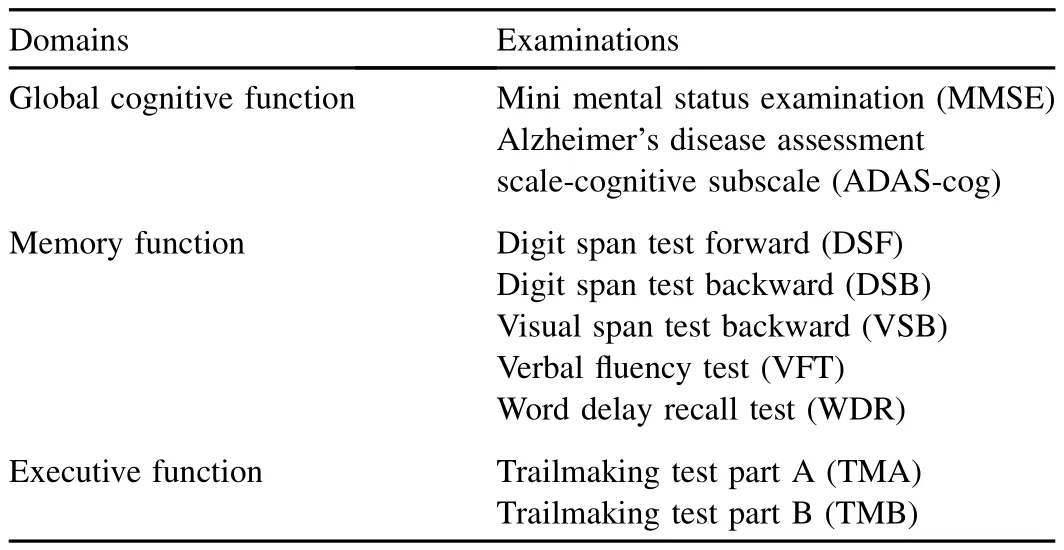
Table 1 Three domains of cognitive function.
3.Results
The results of the effect sizes and forest plots of the aforementioned nine variables are described as follows.
3.1.MMSE
Five studies involving 785 participants used MMSE.14,16—19In the study of Lam et al.,18Tai Chi practitioners were stratified into two groups based on the years of practicing,and this study was treated as two independent sets of data in metaanalysis.Therefore,there were in total six sets of data. Three sets of data were from intervention studies14,16,17and three sets of data were from cross-sectional studies.18,19Overall,there was a significant difference between experimentandcontrolgroupsin MMSE score(95% CI, 0.06—0.50),and the mean ES was 0.28,p<0.05(Table 3), which is considered a small ES.
3.2.ADAS-cog
Two trials involving 648 participants used ADAS-cog,14,18and in total there were three sets of data.One set of data was from interventional study14and two sets of data were from cross-sectional study.18Overall,there was no significant difference between MB exercise and control groups in the ADAS-cog score(95%CI,-0.04 to 0.35),the mean ES was 0.16,p>0.05(Table 4).
3.3.TMA

?
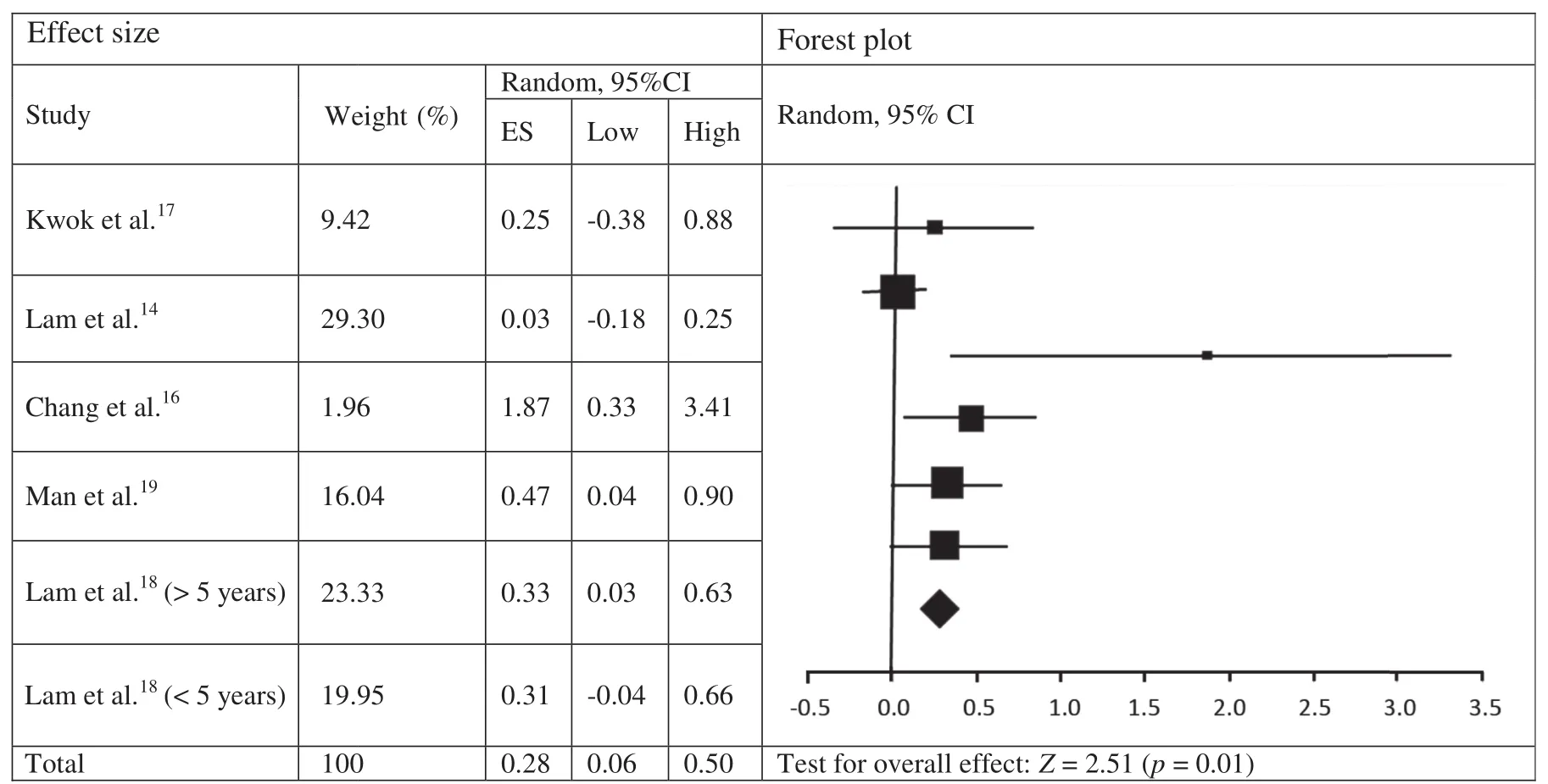
Table 3 Effective size(ES)and forest plot of mini mental status examination(MMSE).
Three trials involving 389 participants used TMA.14,17,20These sets of data were from intervention studies.Overall, there was no significant difference between Tai Chi exercise group and control group in TMA score(95%CI,-0.13 to 0.92),and the mean ES was 0.41,p>0.05(Table 5),which is considered a medium ES.
3.4.TMB
Three studies involving 389 participants used TMB.14,17,20These sets of data were from intervention studies.Overall,the difference between experiment and control groups in TMB scores was not significant,but it was on the borderline(95% CI,-0.01 to 1.01),and the mean ES was 0.46,p=0.05(Table 6),which is considered a medium ES.
3.5.DSF
Three studies involving 415 participants used DSF.14,15,21These sets of data were from intervention studies.Overall, there was no significant difference between experiment and control groups in DSF score(95%CI,-0.08 to 0.95),and the mean ES was 0.43,p>0.05(Table 7),which is considered a medium ES.
3.6.DSB
Five trials involving 734 participants used DSB.14,15,18,21In total,there were five sets of data;three sets of data fromintervention studies,14,15,21and two sets of data from crosssectional studies.18Overall,there was significant difference between experiment and control groups in DSB score(95% CI,0.06—0.76),and the mean ES was 0.41,p<0.05(Table 8), which is considered a medium ES.
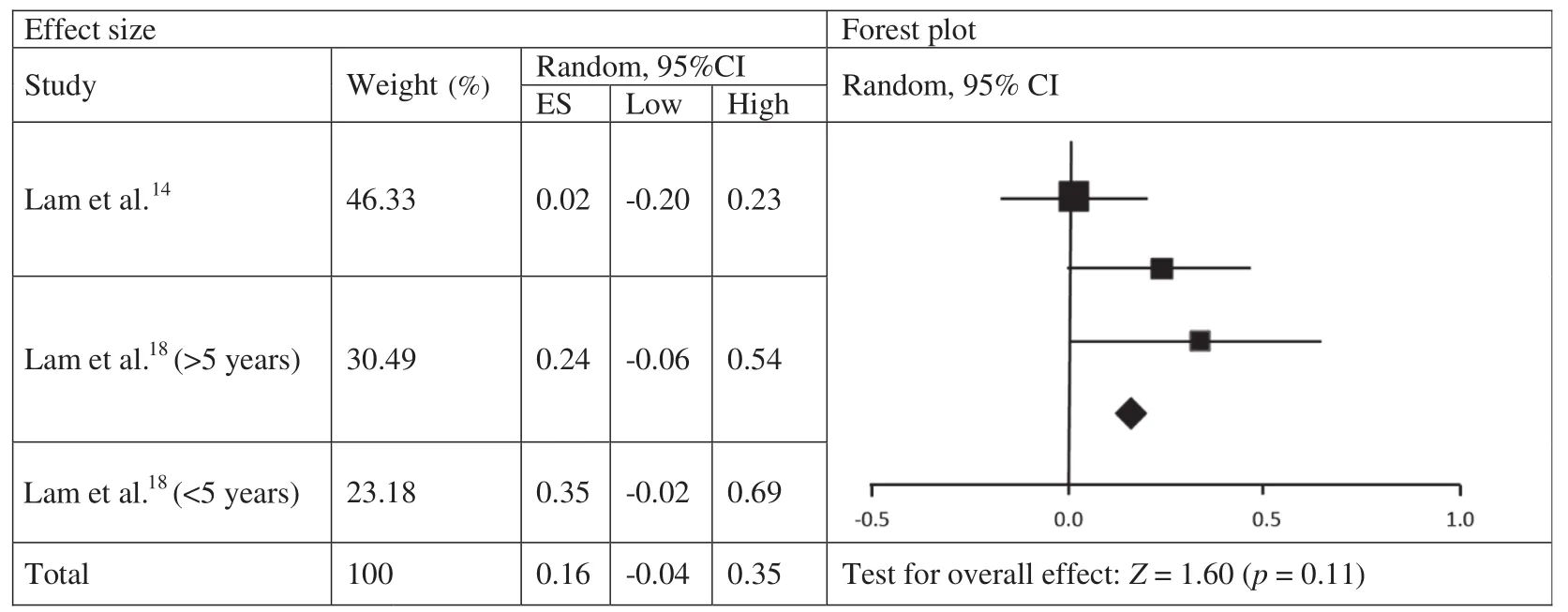
Table 4 Effective size(ES)and forest plot of Alzheimer’s disease assessment scale-cognitive subscale(ADAS-cog).
3.7.VSB
Two trials involving 648 participants used VSB.14,18In total there were three sets of data.One set of data was from an interventional study14and two sets of data were from crosssectional studies.18Overall,there was a significant difference between experiment and control groups in the DSB score (95%CI,0.03—0.37),and the mean ES was 0.20,p<0.05 (Table 9),which is considered a small ES.
3.8.VFT
Three trials involving 708 participants used VFT.14,18,21In total there were four sets of data.Two sets of data were from intervention studies14,21and two sets of data were from crosssectional studies.18Overall,there was a significant difference between experiment and control groups in VFT score(95% CI,0.06—0.51),and the mean ES was 0.28,p<0.05(Table 10),which is considered a small ES.
3.9.WDR
Three trials involving 648 participants used WDR.14,18Each group in this study was treated as an independent set of data in meta-analysis,and in total there were three sets ofdata.Onesetofdatawasfromaninterventionalstudy14andtwo sets of data were from a cross-sectional study.18Overall,the difference between experiment and control groups in WDR scores was not significant,butit was on the borderline(95%CI, 0.03—0.30),and the mean ES was 0.18,p=0.05(Table 11), which is considered small.
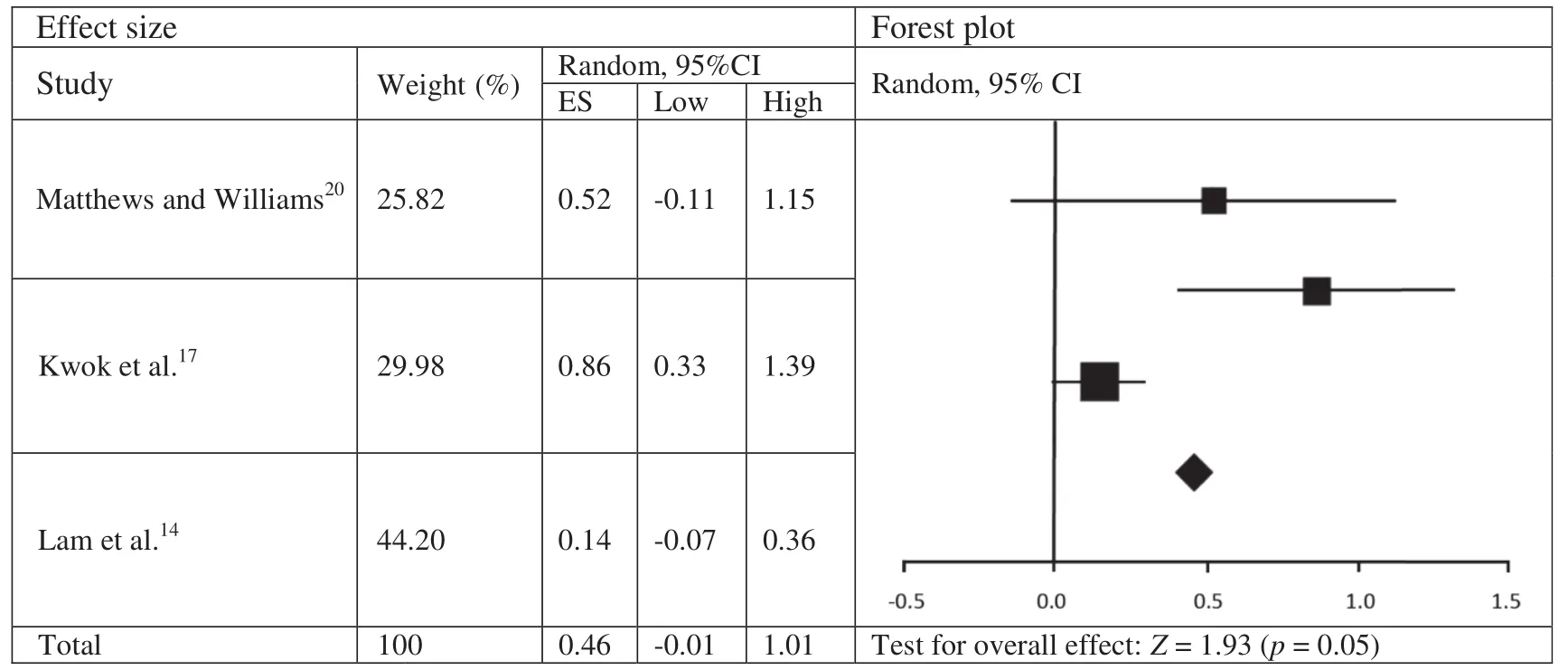
Table 6 Effective size(ES)and forest plot of trailmaking test part B(TMB).
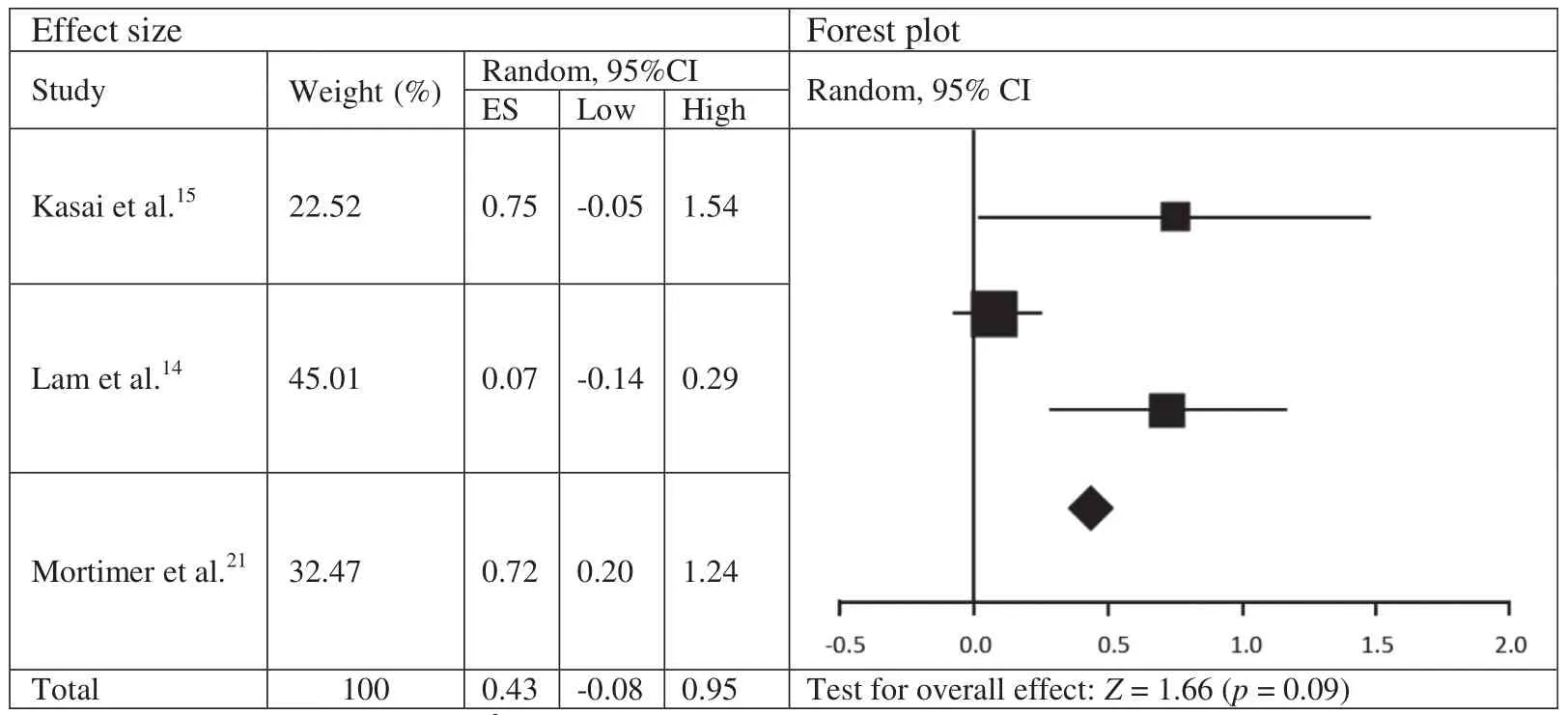
Table 7 Effective size(ES)and forest plot of digit span test forward(DSF).
4.Discussion
Considering the significance and the values of ES from the combined studies,14—21results from the present meta-analysis showed that Tai Chi exercise would have cognitive benefits on the global cognitive function and memory function,especially verbal working memory.However,the cognitive benefits over executive function did not show consistency from the combined studies.
4.1.Global cognitive function
MMSE and ADAS-cog were used to evaluate the global cognitive function level of participants.These screening tools have been widely used to identify participants with dementia or severe cognitive impairment.Both tools have different components that look into specific domains of cognitive function such as executive function,memory,processing speed,and attention.
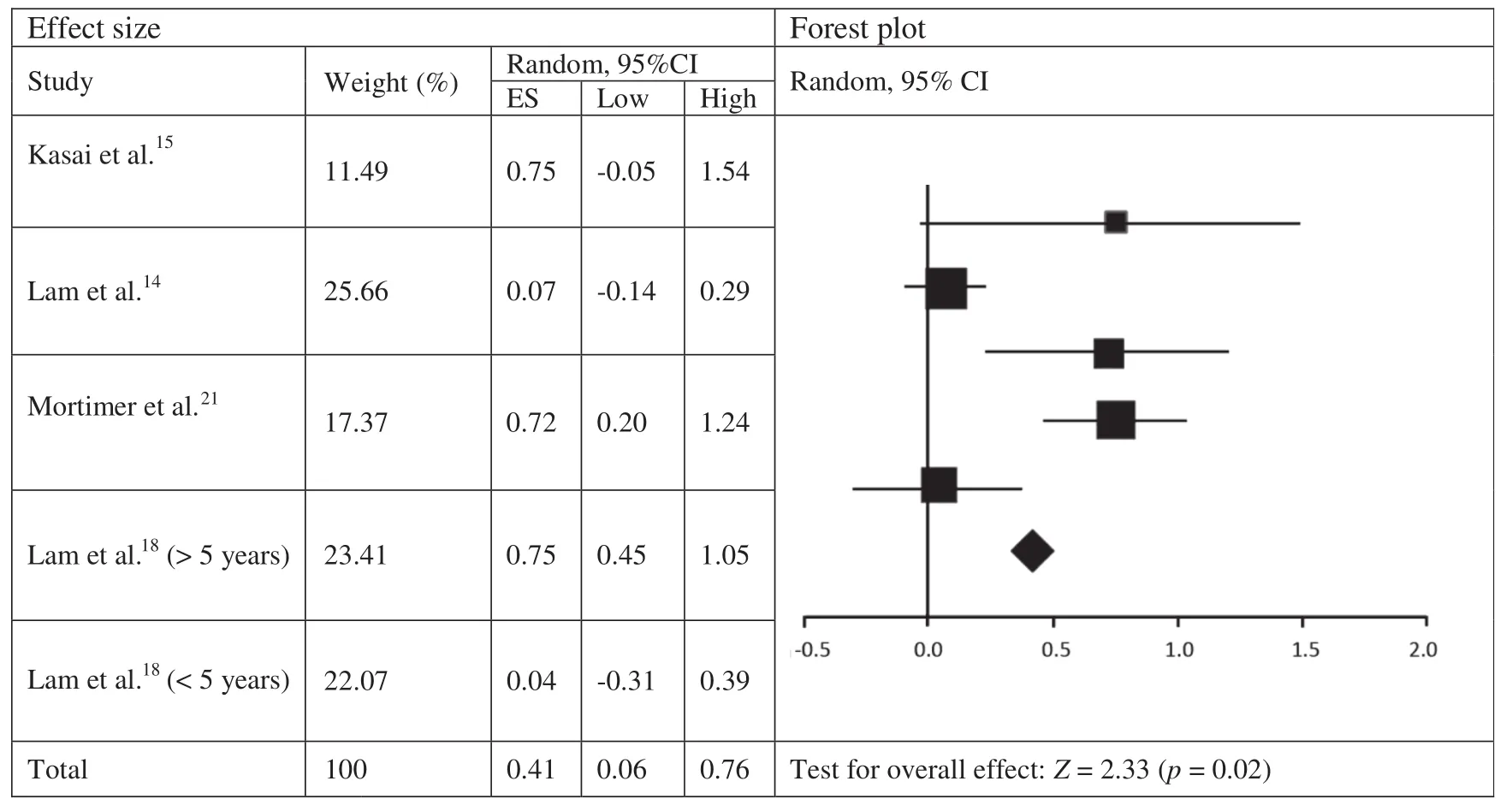
Table 8 Effect size(ES)and forest plot of digit span test backward(DSB).

Table 9 Effective size(ES)and forest plot of visual span test backward(VSB).
Results from this meta-analysis showed that after practicing Tai Chi exercise,participants demonstrated some significant improvements in MMSE scores,but not in ADAS-cog scores. In addition,the overall ESs calculated from MMSE was 0.28 which is considered a small effect.
Before the onset of dementia,older adults usually do not show noticeable decline in global cognitive function.Even when MCI or CIND is identified,which indicates the presence of cognitive impairment,older adults still can remain at a normal level of global cognitive status.25In seven trials where these two tests were implemented,no participant had dementia,and only 11 participants from one trial16had MCI. This means that older adults in this sample all had relatively good global cognitive function at baseline,therefore,no significant improvement after practicing Tai Chi exercise is understandable.If the MCI and/or AD patients were the participants in these studies,we might see more improvements in global cognitive function among these patients since they would have more room for improvements.
4.2.Executive function
Implementation of goal-directed behaviors is heavily relianton normalexecutive function.In olderadults,“impairment of executive processing function could bring about difficulties in goal-directed activities such as:medication adherence,cooking,housekeeping,and motor tasks performed in a complex environment”.26TMA and TMB have been widely used to investigate executive function.After practicing Tai Chi exercise,participants did not show signif icant improvement in their performances in TMA and TMB. The results of this meta-analysis indicated that Tai Chi exercise may not have significant cognitive benefits of executive functions in older adults.
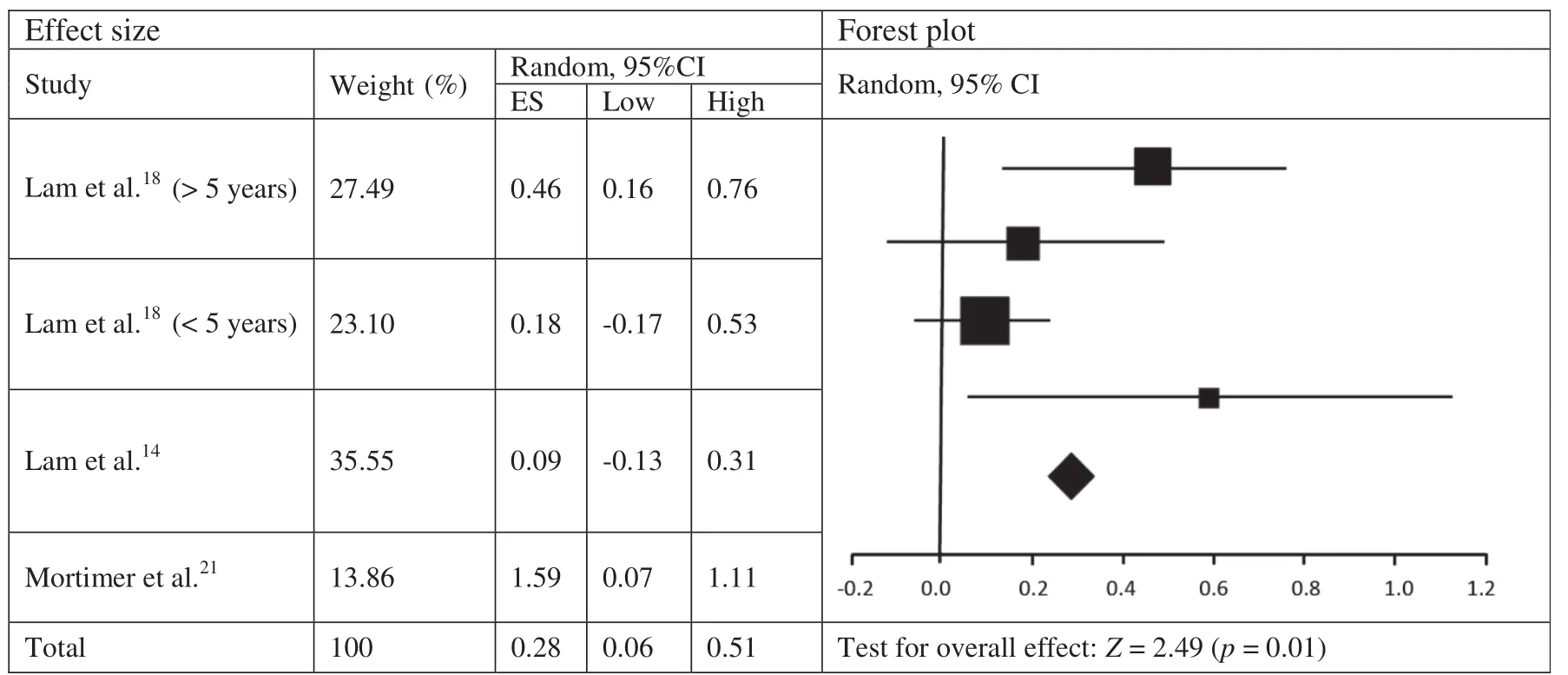
Table 10 Effect size(ES)and forest plot of verbal fluency test(VFT).
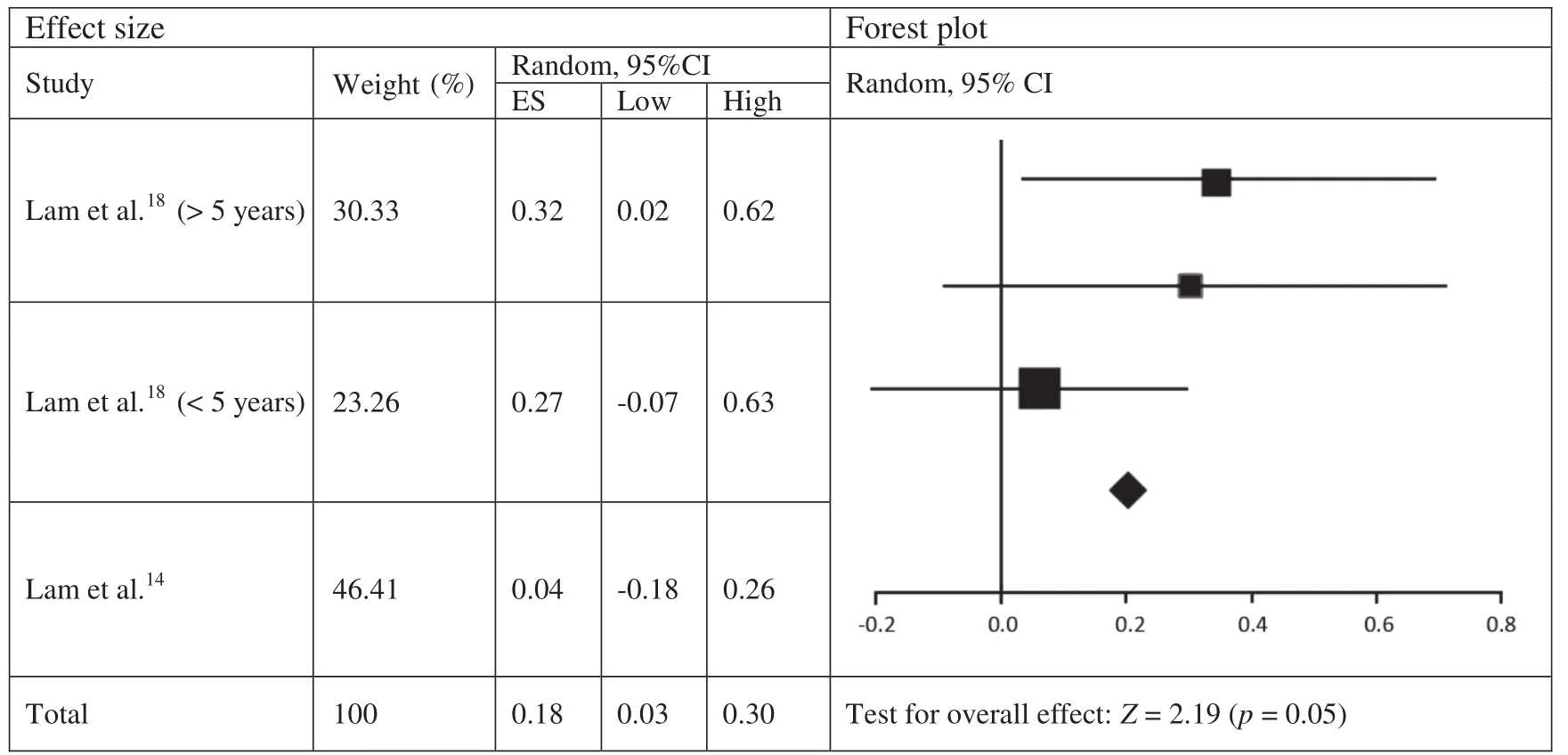
Table 11 Effect size(ES)and forest plot of word delay recall test(WDR).
The calculated overall ESs for TMA and TMB were 0.41 and 0.46,respectively,which is considered medium or moderate,however,both TMA and TMA did not reach the significant level(p< 0.05).Therefore,future research is warranted to determine the effect of Tai Chi exercise on the executive function,as measured by TMA and TMB.
4.3.Memory function
Five screening tools were used to measure memory function of older adults in these eight studies.They were DSF, DSB,VSB,VFT,and WDR.The participants have shown statistical significant improvement in DSB,VBS,and VFT,but not DSF and WDR.All these five tests were used to measures short-term memory,however,each of these tests look into a specific component of short-term memory.For example,DSF and DSB are measurements for verbal working memory, whereas VSB measures non-verbal working memory.The differences between these five variables(tests)are beyond the scope of this meta-analysis study and will not be discussed here.
Examining the ES calculated for each variable(test), practicing Tai Chi showed the effects on DSF(ES=0.43), DSB(ES=0.41),VSB(ES=0.20),VFT(ES=0.28),and WRD(ES=0.18).All the calculated ESs showed moderate to small effects,except for WRD.
Based on statistical significance and ES calculated from these five tests,in general,Tai Chi exercise could be considered beneficial for improvement of memory functions in older adults;especially verbal working memory,which is a cognitive system that is responsible for the temporary storage and manipulation of information.27This finding is significant because verbal working memory is involved in many daily tasks,from remembering sequences of numbers such as phone numbers while writing them down,to understanding long and difficult sentences in order to have a conversation. In addition,verbal working memory is one of several cognitive functions that is highly susceptible to decline in old age.28
4.4.Additional strength of this study
A strength of the present study is that the results from this meta-analysis are more thorough than that of a single small sample study or a traditional literature review.Studies included in this meta-analysis were mostly of small sample size,and even though they have findings with statistical significance,the true values of their findings were limited and may not be generalized to the entire older population. However,after combining the results from these studies,and considering weights based on sample size,results from this meta-analysis have more inferential implications for the older population.For example,in the study of Mortimer et al.,21sample size was 60,individual ES calculated for VFT from this study was 1.59,which was a very large ES. However,after combining four sets of data,results based on 708 older adults showed that the overall ES calculated from VFT was only 0.28,which was considered as a small effect.
4.5.Potential memory benefits for managing AD
Decline in memory function is a major risk factor of AD.29After the onset of AD,memory function will be the first domainofcognitivefunctiontobeaffected,andtobedeteriorated the most during the whole course of AD.4Because Tai Chi exercise can improve memory function of older adults,practicing Tai Chi might be able to reduce the incidence of AD and even slow its progression after onset.
Preventive effects of Tai Chi exercise on executive function also may reduce the incidence of AD.Decline in executive function is not a major risk factor for AD,however,it is strongly associated with the early deterioration of physical performance in individuals with amnesic MCI.21Older adults with lower levels of physical performance are less likely to be engaging in physical exercise and are more likely to adopt a sedentary lifestyle.Unfortunately,researchers have found that inactive older adults have a significantly greater chance of developing AD and other kinds of dementia than their physically active counterparts.9Furthermore,Tai Chi is a low intensity,safe form of exercise consisting of slow,relaxed,and graceful movements that do not require as much strength and endurance as other forms of exercise such as aerobic exercise and strength training.Therefore,Tai Chi may be an easier and more appropriate form of exercise for the elderly population than aerobic exercise and strength training.Therefore,Tai Chi may be an ideal alternative form of MB exercise for older adults.
4.6.Limitation
This meta-analysis has limitations,due to limited number of studies,available data and variance between studies.Other factors that may have affected the cognitive benefits of Tai Chi practice include:intensity of each session,total time of the intervention,quality of the Tai Chi instruction and learning and the differences between forms of Tai Chi exercise practiced across studies.It is also possible that“file drawer”fact (most of the journal editors favor positive results and publish them)may limit this meta-analysis.
In order to better understand the effect of Tai Chi exercise on cognitive function,future meta-analysis warrants more studies with the standardized Tai Chi exercise procedure,and including the MCI and/or AD patients in the studies as well. Because the present meta-analysis included the nine cognitive variables generalized from different studies,the results from these studies may be biased.For example,studies with intervention typically have small sample size,short time frame, and more control over the quality of Tai Chi exercise practice. On the other hand,cross-sectional studies typically have large sample size,longer time frames,and less control over quality of Tai Chi exercise practiced.For each ES,the weight distribution was based on number of studies included and sample size of each study.Every overall ES calculated in this metaanalysis favored either short-term,relatively high quality of Tai Chi exercise practice,or long-term practice of Tai Chi exercise with no quality control.Furthermore,the crosssectional studies may also affect the research results since they were not the randomized control trials.
5.Conclusion
Tai Chi as an MB exercise has positive effects on global cognitive,executive,and memory functions.More statistically significant benefits were found on memory function,especially verbal working memory.Findings of the present meta-analysis are in agreement with what researchers have demonstrated about the benefits of physical exercise on cognitive function. Therefore,Tai Chi may be an ideal alternative form of MB exercise to improve cognitive function in older adults.
1.Plassman BL,Langa KM,Fisher GG,Heeringa SG,Weir DR, Ofstedal MB,et al.Prevalence of cognitive impairment without dementia in the United States.Ann Intern Med2008;148:427—34.
2.Hebert LE,Beckett LA,Scherr PA,Evans DA.Annual incidence of Alzheimer disease in the United States projected to the years 2000 through 2050.Alzheimer Dis Assoc Discord2001;15:169—73.
3.Gamaldo AA,An Y,Allaire JC,Kitner-Triolo MH,Zonderman AB. Variability in performance:identifying early signs of future cognitive impairment.Neuropsychology2012;26:534—40.
4.Alzheimer’s Association.Alzheimer’s disease facts and figures.Available at: http://www.alz.org/alzheimers_disease_facts_and_figures.asp;2012[accessed 27.08.2012].
5.Lautenschlager NT,Cox KL,Flicker L,Foster JK,van Bockxmeer FM, Xiao J,et al.Effects of physical activity on cognitive function in older adults at risk for Alzheimer disease.J Am Med Assoc2003;300:1027—37.
6.Willis SW,Schaie KW,Martin M.Cognitive plasticity.In:Bengtson VL, Gans D,Putney NM,Silverstein M,editors.Handbook of theories of aging.New York,NY:Springer;2009.p.295—322.
7.Daffner KR.Promoting successful cognitive aging:a comprehensive review.J Alzheimers Dis2010;19:1101—22.
8.Chan AS,Ho YC,Cheung MC,Albert MS,Chiu HF,Lam LC.Association between mind-body and cardiovascular exercises and memory in older adults.J Am Geriatr Soc2005;53:1754—60.
9.Larkey L,Jahnke R,Etnier J,Gonzalez J.Meditative movement as a category of exercise implication for research.J Phys Act Health2009;6:230—8.
10.Wang YT,Chen S,Liu J,Pearl MJ.Tai Chi:an ideal body-mind harmony exercise for everyone.J Int Counc Health Phys Educ Recreation Sport Dance2000;36:38—43.
11.Chang YK,Nien YH,Tsai CL,Etnier JL.Physical activity and cognition in older adults:the potential of Tai Chi Chuan.J Aging Phys Act2010;18:451—72.
12.Ryan A.Tai Chi Chuan for mind and body.Phys Sports Med1974;1:58—61.
13.Wayne PM,Buring JE,Davis RB,Connors EM,Bonato P,Patritti B,et al. Tai Chi for osteopenic women:design and rationale of a pragmatic randomized controlled trial.BMC Musculoskelet Disord2010;11:40.http:// dx.doi.org/10.1186/1471-2474-11-40.
14.Lam LW,Chau RM,Wong BL.Interim follow-up of a randomized controlled trial comparing Chinese style mind body(Tai Chi)and stretching exercises on cognitive function in subjects at risk of progressive cognitive decline.Int J Geriatr Psychiatry2010;26:733—40.
15.Kasai JYT,Busse AL,Magaldi RM,Soci MA,de Moraes Rosa P, Curiati JA,et al.Effects of Tai Chi Chuan on cognition of elderly women with mild cognitive impairment.Einstein2010;44:40—5.
16.Chang JY,Tsai PF,Beck C,Hagen JL,Huff DC,Anand KJ,et al.The effect of Tai Chi on cognition in elders with cognitive impairment.Medsurg Nurs2012;20:63—9.
17.Kwok TC,Lam KC,Wong PS,Chau WW,Yuen KS,Ting KT,et al. Effectiveness of coordination exercise in improving cognitive function in older adults:a prospective study.Clin Interv Aging2011;6:261—7.
18.Lam LC,Tam CW,Lui VW,Chan WC,Chan SS,Chiu HF,et al.Modality of physical exercise and cognitive function in Hong Kong older Chinese community.Int J Geriatr Psychiatry2009;24:48—53.
19.Man DW,Tsang WW,Hui-Chan CW.Do older Tai Chi practitioners have better attention and memory function?J Altern Complement Med2010;16:1259—64.
20.Matthews MM,Williams HG.Can Tai Chi enhance cognitive vitality?A preliminary study of cognitive executive control in older adults after a Tai Chi intervention.J S C Med Assoc2008;104:255—7.
21.Mortimer JA,Ding D,Borenstein AR,DeCarli C,Guo Q,Wu Y,et al. Changes in brain volume and cognition in a randomized trial of exercise and social interaction in a community-based sample of non-demented Chinese elders.Alzheimers Dement2012;30:757—66.
22.BorensteinM,HedgesLV,HigginsJP,HannahR,RothsteinHR.Introduction to meta-analysis.Oxford:John Wiley&Sons,Ltd;2009.p.87—102.
23.Cohen J.The statistical power of abnormal-social psychological research: a review.J Abnorm Soc Psychol1962;65:145—53.
24.Hedges LV,Olkin I.Statistical methods for meta-analysis.San Diego: Academic Press;1986.
25.McGough EL,Kelly VE,Logsdon RG,McCurry SM,Cochrane BB, Engel JM,et al.Associations between physical performance and executive function in older adults with mild cognitive impairment:gait speed and the timed“Up&Go”test.Phys Ther2011;91:1198—207.
26.Baddeley A.Working memory:looking back and looking forward.Nat Rev Neurosci2003;4:829—39.
27.Hertzog C,Dixon R,Hultsch D,MacDonald S.Latent change models of adult cognition:are changes in processing speed and working memory associated with changes in episodic memory?PsycholAging2003;18:755—69.
28.Aichberger MC,Busch MA,Reischies FM,Stro¨hle AA,Heinz AA, Rapp MA.Effect of physical inactivity on cognitive performance after 2.5 years of follow-up:longitudinal results from the Survey of Health, Ageing,and Retirement(SHARE).Geropsych(Bern)2003;23:7—15.
29.Modrego PJ.Predictors of conversion to dementia of probable Alzheimer type in patients with mild cognitive impairment.Curr Alzheimer Res2006;3:161—70.
11 October 2012;revised 24 January 2013;accepted 25 February 2013
*Corresponding author.
E-mail address:ywang2@gsu.edu(Y.Wang)
Peer review under responsibility of Shanghai University of Sport
2095-2546/$-see front matter Copyright©2013,Shanghai University of Sport.Production and hosting by Elsevier B.V.All rights reserved. http://dx.doi.org/10.1016/j.jshs.2013.09.001
杂志排行
Journal of Sport and Health Science的其它文章
- Analysis of the TCM theory of traditional Chinese health exercise
- Current concepts in sport concussion management:A multifaceted approach
- Human neuromuscular structure and function in old age:A brief review Geoffrey A.Powera,*,Brian H.Daltonb,Charles L.Ricec,d
- ActiGraph GT3X determined variations in“free-living”standing, lying,and sitting duration among sedentary adults
- Process and outcome evaluation of the“No more smoking!It’s time for physical activity”program
- A 6-week diet and exercise intervention alters metabolic syndrome risk factors in obese Chinese children aged 11—13 years
